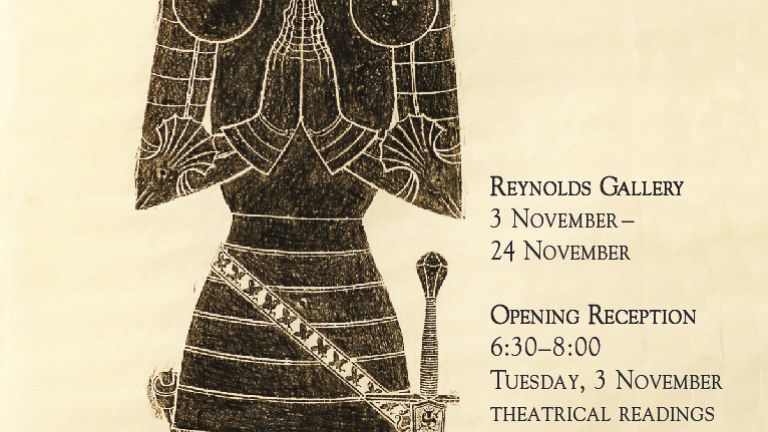
A Rub with Death: The Leppelmeier Collection
These images of knights and their ladies mark a time when England was transitioning from a medieval, feudal culture to Renaissance humanism.
A Rub with Death: The Leppelmeier Collection
November 3 - November 24, 2015
Opening Reception: Tuesday, November 3, 2015, 6:30 - 8:00 pm.
Theatrical readings presented by English and Theatre Arts Departments, 7:00 pm - 7:30 pm.
University of the Pacific's Reynolds Gallery is pleased to present A Rub with Death: The Leppelmeier Collection, an exhibition featuring rubbings taken from 15th-century monumental brasses found in Sussex, England. These images of knights and their ladies mark a time when England was transitioning from a medieval, feudal culture to Renaissance humanism. They give us insight into individuals from that time; their customs, traditions and beliefs.
Monumental brasses are memorials for a deceased person from between the 13th and 16th centuries. They are found in churches, usually originally on the floor, and consist of two parts: an engraved plate of brass containing the memorial, and the stone slab in which it was set (casement). Brasses were set into indents cut into the casement, and usually consist of an inscription, often with an effigy of the deceased or another memorial subject such as a cross or a shield.
Brass rubbing was originally a largely British enthusiasm for reproducing onto paper monumental brasses -The concept of recording textures of things is more generally called making a rubbing. They are made by laying a piece of paper over the brass and rubbing the paper with a drawing medium, usually a black wax heelball, to create a detailed negative image of the original brass. The importance of Monumental brasses as a contemporary historical resource for medieval research has been as a rich source of historical information on subjects such as style and fashion, occupations and status, families, heraldry, and imagery
and its meanings.
The Oxford Architectural and Historical Society attempted to record and preserve these memorials by building up a large collection of rubbings made by their members, mainly between the 1840s to 1910s. This collection is now held by the Ashmolean and forms a major part of the museum's holdings of brass rubbings.
There is a searchable database of the collection - Brass Rubbing Collection Online
Contact Us
Jeannette Powell Art Center
University of the Pacific
3601 Pacific Ave.
Stockton CA 95211



